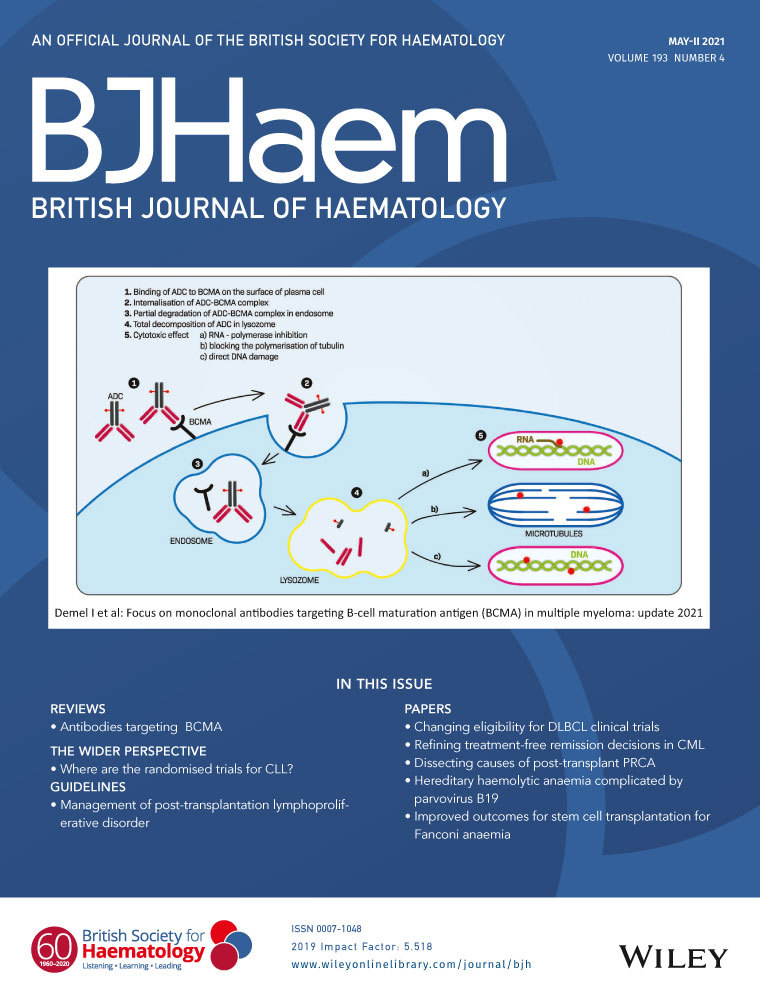Acute human parvovirus B19 infection triggers immune-mediated transient bone marrow failure syndrome, extreme direct hyperbilirubinaemia and acute hepatitis in patients with hereditary haemolytic anaemias: multicentre prospective pathophysiological study
Summary
A total of 244 patients with hereditary haemolytic anaemias (HHA) were screened for acute symptomatic human parvovirus B19 infection (HPV-B19) in a prospective study. To assess the risks associated with HPV-B19 infection, patients were classified into Group I and Group II according to presence or absence (symptoms, signs and specific serology) of acute HPV-B19 infection respectively. In all, 131 (53·7%) patients had β-thalassaemia, 75 (30·7%) hereditary spherocytosis (HS), 27 (11·1%) sickle cell anaemia (SCA) and 11 (4·5%) glucose-6-phosphate dehydrogenase (G6PD) deficiency. Of 33 (13·5%) patients who presented with symptomatic HPV-B19 infection, 19 (57·5%) had HS, nine (27·3%) had β-thalassaemia and five (15·2%) had SCA. In Group I, there were significant differences in the mean white blood cell, red blood cell and platelet counts, haemoglobin concentration, total bilirubin (TB), alanine aminotransferase, aspartate aminotransferase and serum creatinine (all P < 0·001) compared to Group II. In all, 27 (81·8%) patients had arthropathy and bone marrow failure (BMF); 13 (39·4%) had acute kidney injury (AKI), more in SCA (80%); and 12 (36·4%) patients had hepatitis, more in HS (66·8%). Five (15·2%) patients with HS had BMF, AKI, nervous system involvement and extreme hyperbilirubinaemia (TB range 26·3–84·7 mg/dl). Five (15·2%) patients had haemophagocytic syndrome. Two patients with HS combined with Type-I autoimmune hepatitis presented with transient BMF. Complete recovery or stabilisation was noted at 12 months in every patient except for one patient with SCA who died during the infection. HPV-B19 must be suspected and screened in patients with HHA with typical and atypical presentations with careful follow-up.
Conflict of Interest
The authors have no conflict of interest with the content of this paper.
Open Research
Data Availability Statement
The authors confirm that the data supporting the findings of this study are available within the article, its supplementary material, and upon reasonable request.




